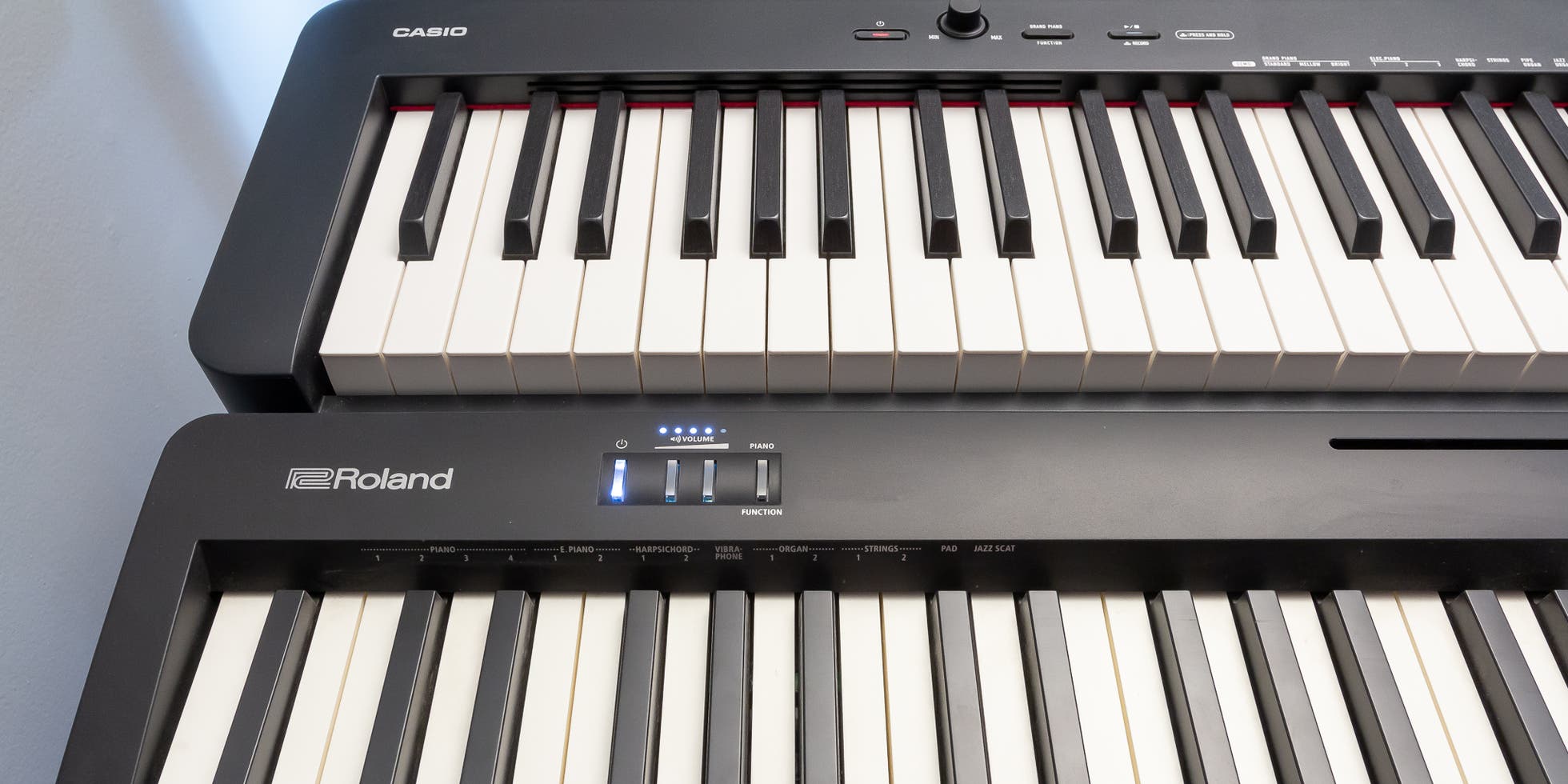Last updated on July 26, 2024 – scroll towards the bottom of the post for buying recommendations.
If you are looking to purchase an instrument to start your musical journey or upgrade a keyboard to a digital piano, read on as we try to demystify the world of buying instruments.
Digital piano attributes
Digital pianos are generally separated by these attributes
- Number of keys: entry-level (or travelling) instruments may have 61 or 76 piano keys. All full-sized digital pianos have 88 keys.
- Hammer action: the technology in which the keys will strike the digital sensor to produce the sound. All digital pianos have weighted keys (not to be confused with semi-weighted or velocity-sensitive keys), but the action has different grading depending on the complexity and price point. Generally, the more expensive the device is, the better the action gets. For general reference, here is what the manufacturer calls their action classes – note they may change or new ones added:
- Casio: Tri-Sensor Scaled Hammer Action Keyboard I and II
- Yamaha: Graded Hammer Standard (GHS), Graded Hammer [Effect] (GH/GHE), Graded Hammer 3 (GH3) and Natural Wood (NW)
- Roland: Progressive Hammer Action (PHA) 1, 2, 3, and 4
- Instruments (or patches): how many instrument sounds can the device generate? Note that most instruments now come with USB-MIDI or Bluetooth-MIDI connectivity (and if no USB, a USB-MIDI interface can be purchased for under $50), enabling you to connect to a computer. This is where you can utilize the computer as a sound generator and expand the instrument’s capabilities, rendering your digital piano a costly musical input device.
- Polyphony or Voices: how many independent/separate tones can be simultaneously generated at the same time. The usual numbers today are between 64 to 128 voices. This means how many notes it can render at the same time. As long as the device can produce 64 voices or more, it will be more than sufficient for any pianist’s needs.
- Amplification: does it have speakers, and how good is it without plugging into an external sound system? In most cases, the instrument will always sound much better with headphones or larger external speakers.
What parts do you need?
Digital piano
You did come this far to read the article: buy a device that fits your budget and needs. Digital pianos range from basic to feature-rich, but these should be the bare minimum for a device that can grow with you in the future:
- 88 weighted keys (again, do not buy a digital piano with semi-weighted keys)
- Left/right output and headphone jack (1/4″ jack can be adapted to regular earbud jack which is 1/8″ sized with a simple headphone adapter)
- USB, Bluetooth and/or MIDI connection – this will enable you to expand your digital piano to your computing device
- Speakers that are sized appropriately for your room (or your taste). If you don’t like how the speaker sounds, you can always amplify it separately with desktop audio monitors or standalone amplifier/speakers.
Optional features such as a metronome, 1000+ instrument sounds, a large screen or accompaniment features are just that – options. If you travel or perform frequently with the device, those features may come in handy. However, that USB, Bluetooth or MIDI connection will allow you to add all those features through your computing device.
Digital piano stand
Some digital pianos, such as the Yamaha P series, sell dedicated wooden stands. They do fit and look better, but they may have a price premium. Consider either the factory-fitted stand or buying a 4-legged stand. X or Z-style stands are more cost-effective but may interfere with your knees.
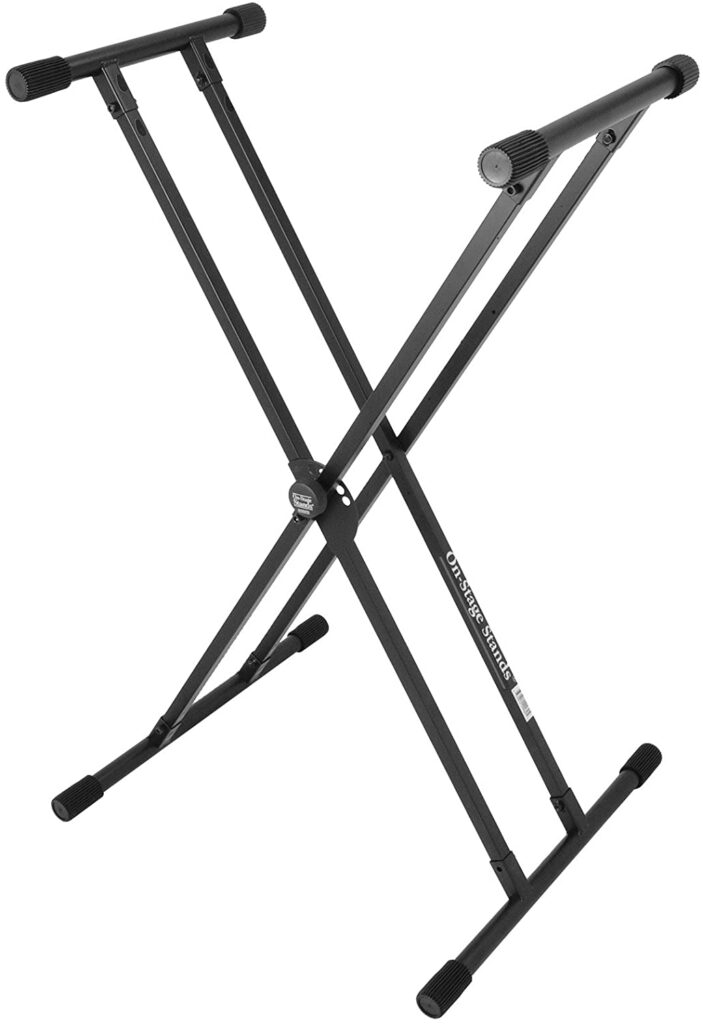

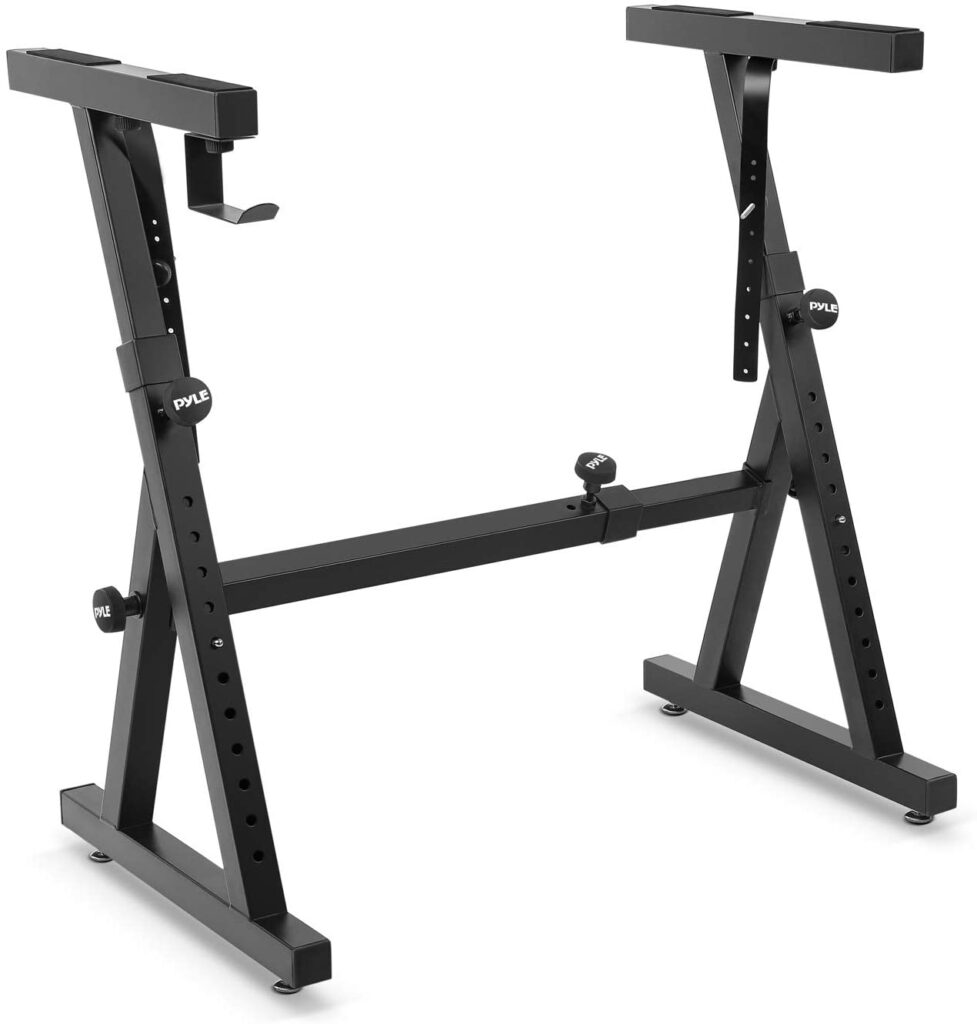
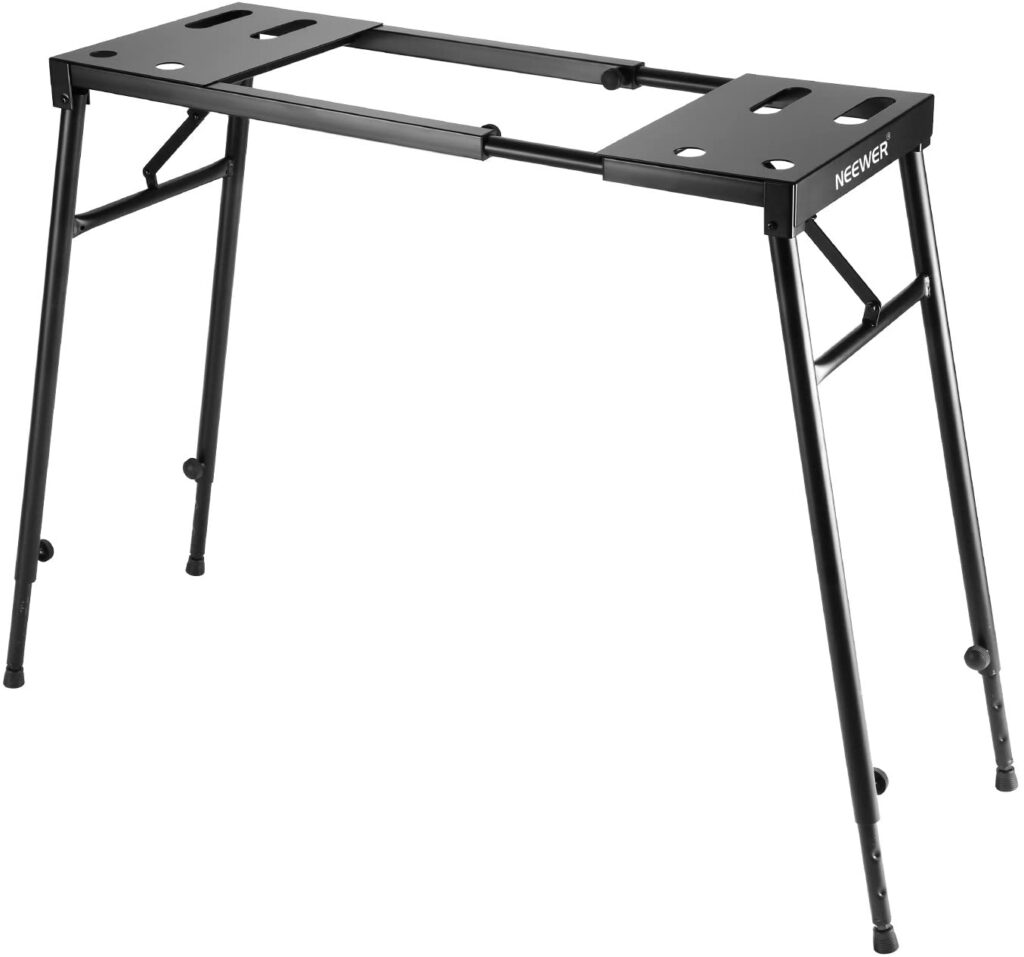
Pedals
Manufacturers may or may not include a piano pedal. Even if they do, the pedal may be a simple on/off switch. If you buy the factory-fitted stand, look for the factory-fit pedals (which will come with two or three pedals). Otherwise, spend $30 or more on a good pedal to replace the factory ones.
In case you are wondering, the 3 pedals pianists use are:
- Damper (or sustain) pedal: most frequent pedal used, and is really the only most people care. This is the right-most pedal on an acoustic piano
- The Sostenuto pedal holds the notes you pressed down prior to its engagement. This middle pedal is rarely used and is needed for more senior pieces only. It appears only on a grand piano and is available on more expensive digital pianos.
- Una corda (or soft) pedal: appears on the left pedal on acoustic piano – this changes the way hammers strike the string by shifting the hammer (so that it hits one less string typically). This effectively thins or lowers the volume of the keys being struck.
- Practice pedal: This pedal appears as the middle pedal on an upright piano (and some grand pianos via a pulley contraction). It inserts a piece of felt cloth between hammers and strings to mute the sound. This does not get emulated on a digital piano, as a player can simply lower the volume or put on headphones. We mention it here for completeness.
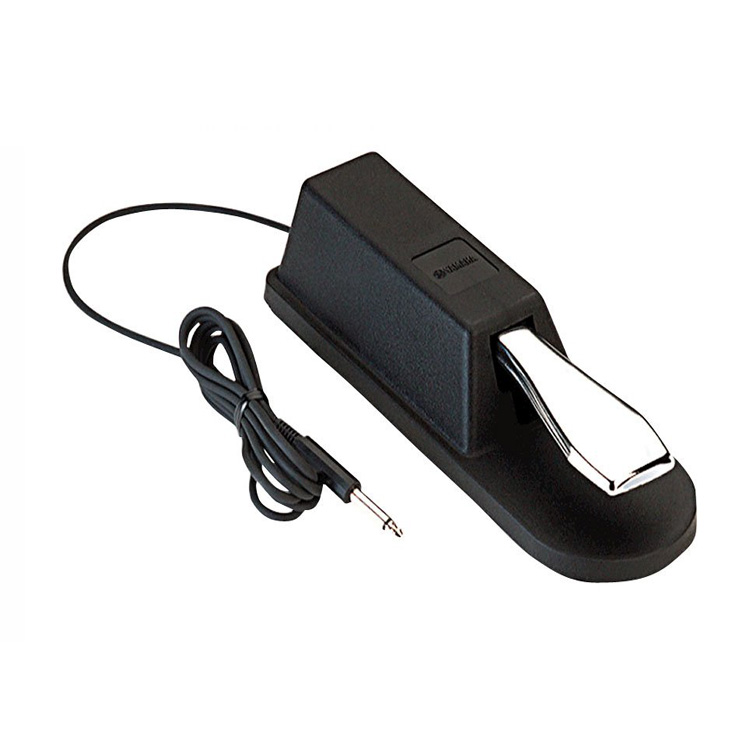
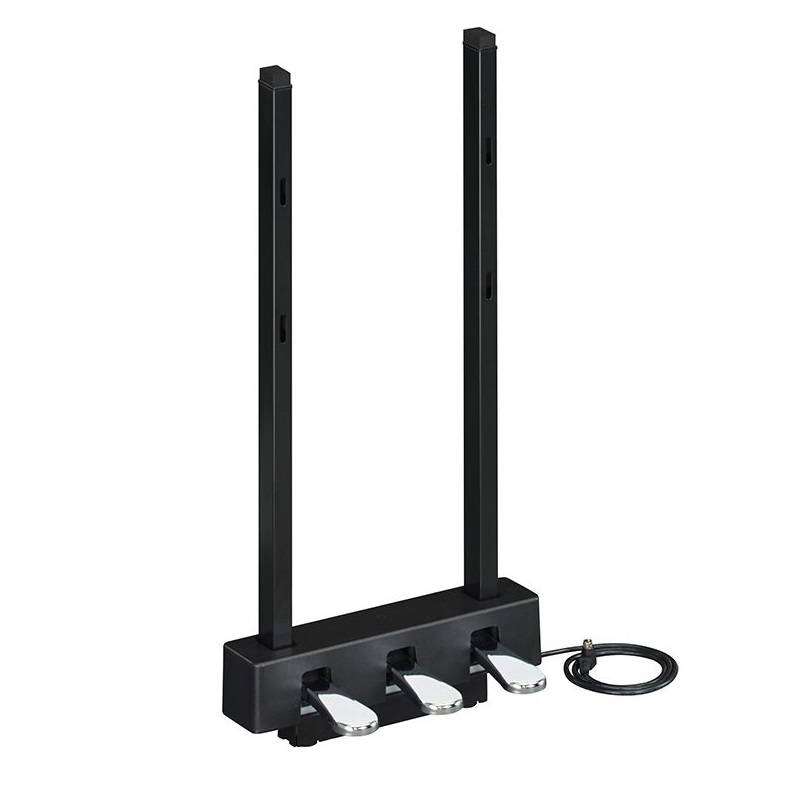
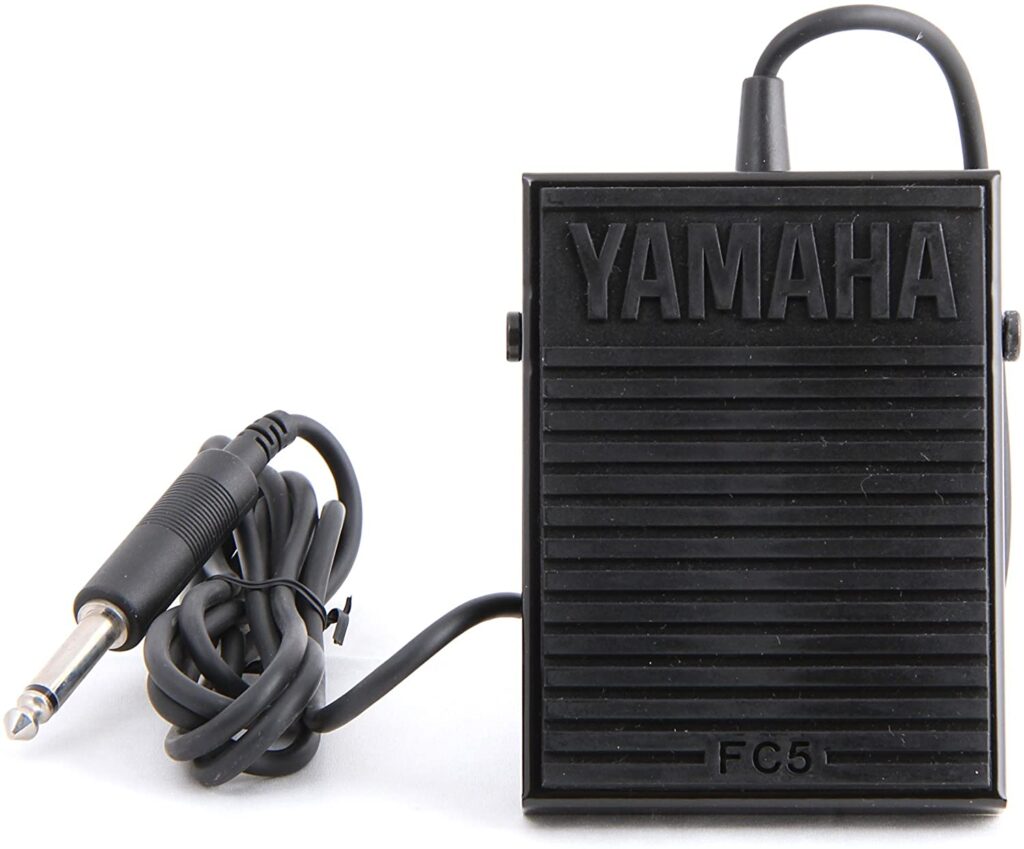
Each manufacturer has its own set of pedals available, but you can also buy generic-branded ones from M-Audio or Apex (among others). Be sure to check compatibility with your digital piano (or find ones that can switch polarity).
What are some of the digital pianos out there?
This does not constitute a stamp of approval, but many shoppers will look at these digital pianos (last updated December 2021):
- Sub $1,000: Roland FP-10 / FRP-2 , Yamaha P-45, Casio PX-S3100
- $1,500 – $2,000: Roland F701, Yamaha Arius YDP-145, Casio AP-470
- $2000+: Yamaha P-525, Roland RD-2000, Nord Piano 5
Where can you buy digital pianos?
As of July 2024, feel free to look around and comparison shop. For new pianos, check out some of the big stores (all links are affiliate-free and safe to click):
- Costco Canada: https://www.costco.ca/digital-pianos.html
- Bestbuy Canada: https://www.bestbuy.ca/en-ca/category/digital-pianos/29364
- Long and McQuade: https://www.long-mcquade.com/departments/27/Keyboards/Digital_Pianos.htm
- Cosmo Music: https://cosmomusic.ca/categories/pianos-keyboards
Used digital pianos from Facebook Marketplace, Kijiji or Long & McQuade Gear Hunter is also a good alternative. Last-generation digital pianos may lose on some convenience features (Bluetooth or newer audio tone generations) but will not affect piano playing.

